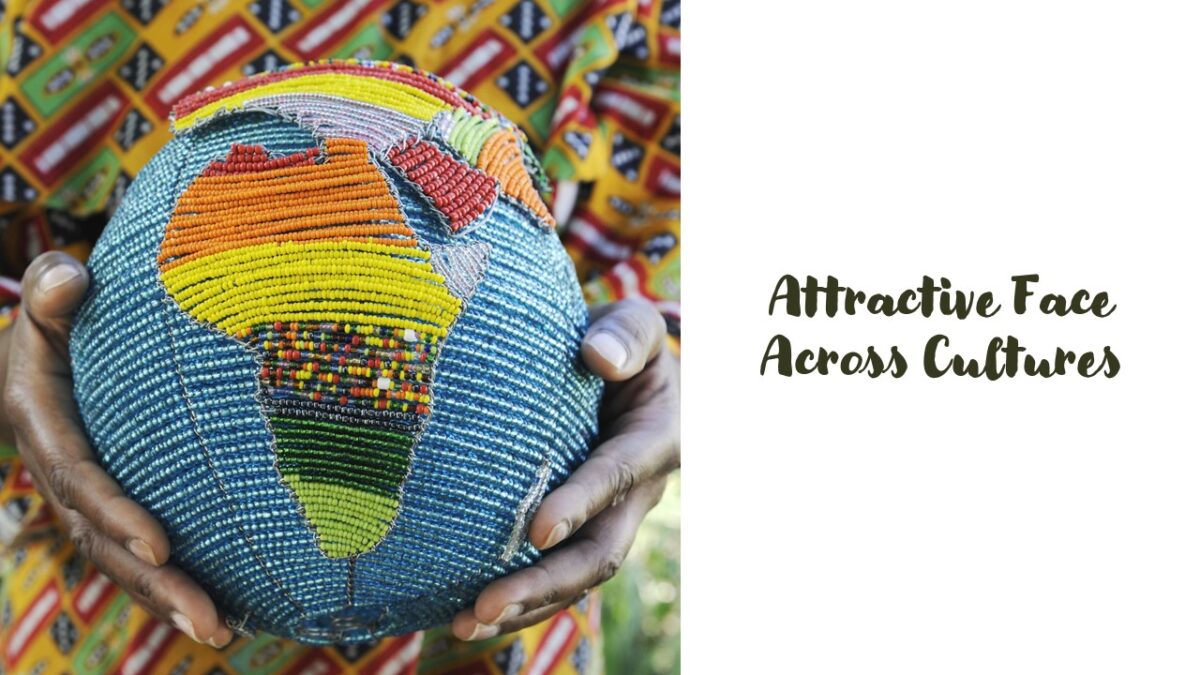Are attractive faces are similar or different across cultures? Many evolutionary biologists and psychologists believe that certain features of human faces are universally attractive for mating in all societies.
This universality might be due to human biological roots. This is a valid assumption because the appearances of men and women have a significant evolutionary role in the attraction of mates for greater reproductive success (see more elsewhere).
Similarities in Attractive Faces Across Societies
Studies have found many cross-cultural similarities in the perception of attractive facial characteristics. For example, average facial qualities and female “neotenous” facial features are rated as attractive by Americans, Russians, Brazilians, Paraguayan Indians, and Venezuelan Indians when they look at the facial photographs of people from the United States, Brazil, and Paraguayan Indians (Jones & Hill, 1993).
Another study revealed that across many cultural samples, such as African Americans and European Americans, Hispanics, Asians, and Taiwanese, cultural conceptions of the beautiful face vary remarkably little. For example, many people in several cultural groups consider the faces of a woman with neonate large and widely spaced eyes with dilated pupils, high eyebrows, long hair, and a fuller hairstyle, a small nose, sexually mature high cheekbones, a small chin, an expressive, large smile, a narrow face with thin cheeks, and a full lower lip more attractive (Cunningham et al., 1995).
Other findings from four ethnic-cultural groups and 13 countries revealed that, despite their different racial appearance, Blacks, Asians, Whites, and Hispanics had somewhat similar beauty standards (Cunningham et al., 1995).
Westernization of Attractive Faces
Such similarities could be explained by the Westernization of facial beauty in the 20th century. Due to the mere exposure effect, the extensive presence of European and European American fashion periodicals, TV shows, and movies promoted such cultural dissemination. Prototypicality effects can also play a role.
Studies have also found that people from many other cultures, including Koreans, Black Nigerians, and Black Senegalese in Africa, African Americans, White Americans, British, and the culturally isolated Tsimane people from the Bolivian rainforest, substantially agree in their ratings of facial attractiveness (e.g., Coetzee, Greeff, Stephen, & Perrett, 2014; Martin, 1964; Silva, Lummaa, Muller, Raymond, & Alvergne, 2012; Zebrowitz, Bronstad, Montpare, 2011; Zebrowitz, Wang, Bronstad, Eisenberg, Undurraga, Reyes-García, & Godoy, 2012).
So, we can see that most people from different cultures agree on what is attractive. However, there are still some differences. They are mostly due to prototypicality effects from repeated exposure to attractive Western faces.
Differences in Attractive Faces between Blacks and White People
Studies have also demonstrated that people’s preferences for attractive facial traits differ between countries. In particular, the data showed that Blacks and Whites have similar standards for facial attractiveness. However, they hold different standards for attractive body appearance (Cunningham et al., 1995).
As previously stated, both White and Black American men found many of the same female facial features appealing (see above), and it appears that racial facial characteristics such as lip size and nostril breadth had little impact on their assessment of attractiveness. In spite of these commonalities, Black men found Black women more appealing than White men. There was a clear predilection for the same race, which was most likely owing to imprinting and the simple exposure effect, which shaped their archetypal beauty.
How Asians and Hispanics Perceive Attractive Faces
Asians’ perceptions of attractive faces are also influenced by cultural factors. Asians view faces with strong cheekbones, broad chins, wide smiles, and expressive characteristics like high-set eyebrows as less appealing due to the prototypically round Asian face. They did, however, perceive women with lower cheekbones and wider cheeks more favorably (when compared to Whites).
However, familiarity and prototypicality are not the only factors that contribute to appeal. Asians and Hispanics alike frequently preferred the attractiveness of faces from other ethnic groups to those of their own. Across studies, Asians perceived female faces that appeared slightly less sexually mature and less expressive (relative to the facial ideal in America) as more attractive. (Cunningham et al., 1995).
The Mere Exposure Effect of Attractive Faces
In general, mere exposure effects have a big influence on facial attractiveness preferences. A recent study from 2014 found that the attractiveness of Black South African and White Scottish faces was perceived as similarly attractive by Black South Africans and White Scottish people. However, both Black South Africans and White Scots felt that Scottish faces were more appealing than African faces in terms of attractiveness (Coetzee, Greeff, Stephen, & Perrett, 2014).
The mere exposure effect could contribute to these differences because people in both cultural groups were well familiar with the facial types of White Europeans, while White Scottish were less familiar with the facial types of Black Africans.
The data also revealed that when judging the attractiveness of African female faces, Black South Africans rely heavily on color cues, whereas White Scottish rely heavily on shape cues (Coetzee, Greeff, Stephen, & Perrett, 2014).
So, there is evidence that the faces that people recognize as being close to their culturally prototypical ones are perceived as attractive to them. They also have preferences for faces resembling themselves. Because of these cultural predilections, people tend to concur in their opinion of what is attractive in the faces of people of their own race and ethnicity when they perceive the faces of people of different races and ethnicities.
It is important to note in this regards that what is beautiful is culturally good.
Among the Other Topics of Interest in this Regard Are:
- What physical characteristics do men and women in other cultures find attractive?
- How men and women perceive an attractive face as an important mating feature of a prospective partner
Perceptive Qualities of an Attractive Appearance
People across cultures may perceive different qualities of physical appearance as attractive for mating.
Visual and auditory perceptions as well as tactile, kinesthetic, and olfactory senses may have different impacts on physical attraction.
